School District of Pasco County
SHARED VISION:
A shared vision of what great teaching looks like — so that every student can succeed
Promising Practice:
Working towards a Common Vision for Instructional Excellence
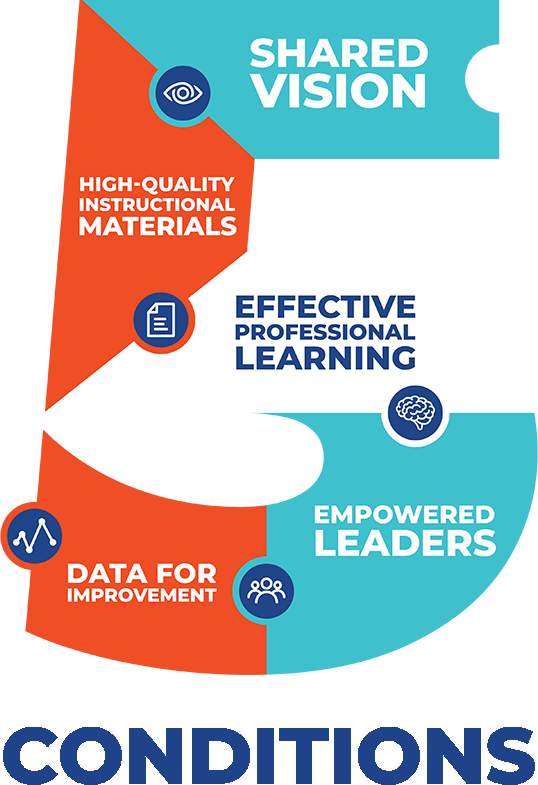
Our goal for this series of Cases for Impact is to provide education leaders and teachers with knowledge and resources needed to ensure that great teaching and learning is consistently realized in all Florida schools. We believe that if education leaders are empowered to know how to recognize, support, and scale excellent teaching practices, we will see tangible results in the classroom.
In partnership with the Florida Association of District School Superintendents (FADSS), Impact Florida launched the Districts for Impact initiative in 2019 to support Superintendents’ focus on supporting excellent instruction within their systems, for all kids. This series of Cases for Impact highlights the promising instructional practices gleaned from the inaugural cadre of five Florida districts.
While we recognize that there are many conditions that factor into a student’s ultimate success, Impact Florida focuses on the factors that leaders and educators can control in their classrooms to improve student engagement and learning. We call these factors the Five Conditions That Support Great Teaching.
This Case for Impact Profile deconstructs how Pasco County School’s (PCS) focus on the implementation of a shared vision of what great teaching looks like — so that every student can succeed — led to further investments in instructional materials, stronger professional learning strategies, and improvements in student outcomes. Over time, it also led the PCS team to realize three critical support levers were needed to actualize this vision: a focus on rigorous instruction, building compassionate schools, and equitable instructional practices.
Pasco County School's Wake-up Call
In school year 2014-15, Pasco County Schools had in place what many educators would define as promising practices that should lead to strong instruction and high student achievement. Across the district, leaders engaged in professional development based on the Marzano Instructional Framework. They implemented district-wide, school-based, professional learning communities; with the belief that teachers and school leaders were using district-provided instructional materials as directed, and were following district guidance. However, state assessment scores did not reflect their deliberate and diligent labor; achievement was declining, and 40% of schools stagnated with state grades no higher than a C.
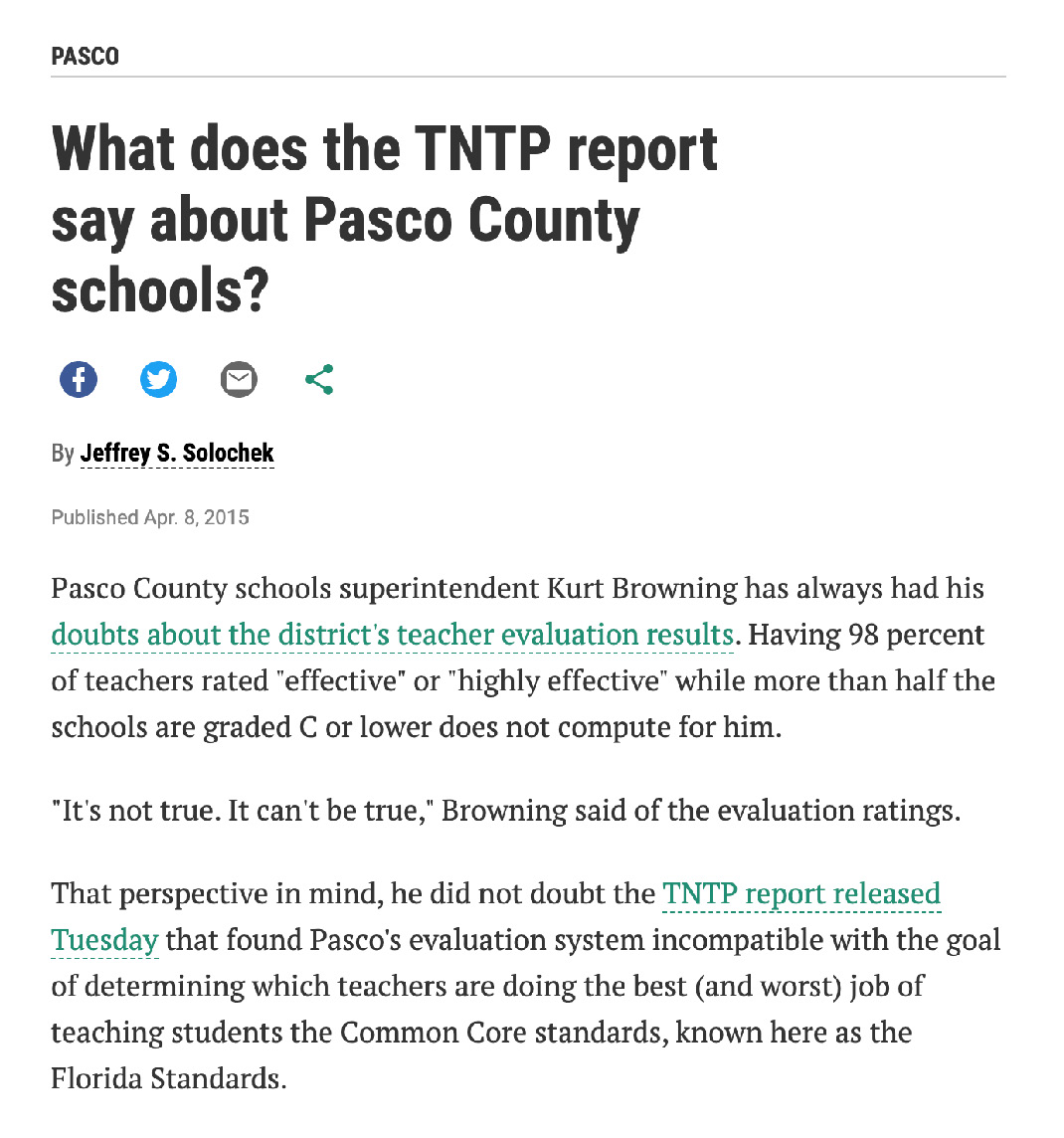
That year, Pasco County Schools engaged TNTP to conduct a district academic diagnostic designed to uncover systemic problem areas that were likely causing lower than expected achievement. TNTP identified four major factors leading to Pasco County Schools’ achievement deficits:
- Lack of common vision for high-quality instruction.
- Professional Learning Communities focused on the wrong work — pedagogy at the expense of the Florida State Standards.
- Lack of instructional rigor.
- Misaligned curriculum — including both core instructional materials and district-created resources.
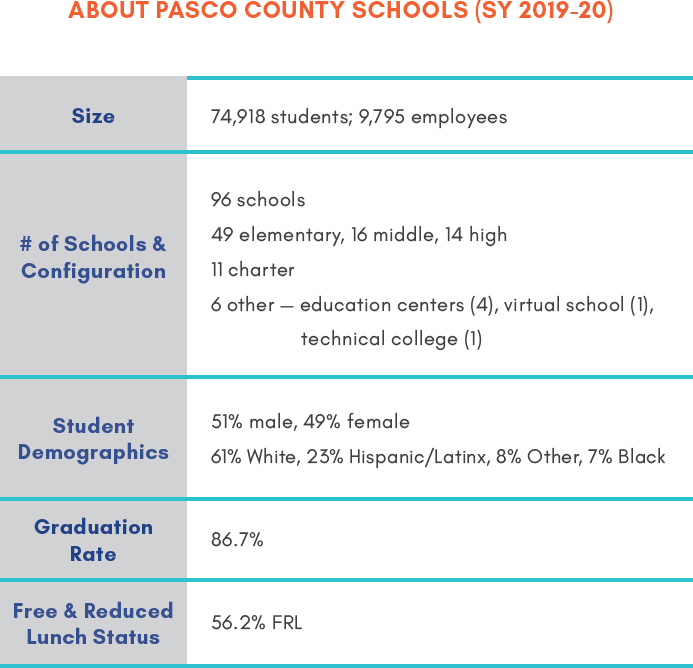
This report catalyzed a powerful reaction from Kurt Browning, Pasco County Superintendent of Schools. He decided to share the diagnostic results with the school board, newspaper, and the general public.
The diagnostic results were clear — work needed to be done to create alignment across the district to ensure that all students had access to a high-quality, world-class education. By making these results public, Superintendent Browning created a sense of urgency around the work and garnered early buy-in from critical stakeholders on the forthcoming changes.
PCS’ Promising Practice: Developing a Common Vision
Following the 2014 TNTP academic diagnostic, Pasco County Schools’ leadership felt armed with a new sense of direction and purpose, and acted immediately and decisively. The district had already developed mission and vision statements to drive the work in schools in 2012 when Superintendent Browning was elected, but state assessment scores and the TNTP diagnostic showed a clear disconnect.
PCS Mission: We exist to provide a world-class education for all students.
PCS Vision: All our students are achieving success in college, career, and life.
Pasco’s leadership began engaging school and district stakeholders, which led them to develop a theory of action that stated:
If we create a unifying vision of instructional excellence for our schools, define the behaviors we believe will lead to success in schools, and provide the necessary supports from our teams, then staff efficacy and student achievement will increase.
As they engaged in this planning work, the district leadership team realized the need to more clearly define how schools would specifically actualize the promises to students outlined by the mission and vision and how the district would support them. Much of the district’s initial efforts focused on building a consensus around the work. Superintendent Browning had a firm belief that “Everyone needed to be in agreement. This is where we want to go. This is who we are. This is our work.” In order to impact practices, he knew they had to first change mindsets and beliefs.
With support from TNTP through the Pilot Florida Implementation Network, the district approached the work as a collaborative effort with principals, providing them with resources about rigor, standards, and the accompanying instructional shifts. Together, they worked to create clear, actionable expectations, which they termed “World-Class Learning Moments,” which were meant to define specifically what excellent instruction looked like for students, and the particular teacher behaviors that would have to occur in order for those moments to come to life for every student, in every classroom, every day. The result of this collective work was a 5-part vision known as the Common Vision of Instructional Excellence (Fig. 1).

Pasco’s vision was supported by an annual district-wide implementation plan, known as the Key Priorities Guide, that provided clarity on roles and expectations for leaders at both the district level and school level. This guide includes essential actions, and short-term and long-term goals for making the Common Vision of Instructional Excellence a reality, one milestone at a time.
A Focus on Rigorous Instruction
Pasco County Schools began operationalizing its vision by focusing on standards-aligned instruction in classrooms throughout the district. Using Achieve the Core’s Instructional Practice Guide, Pasco’s Office for Leading and Learning conducted classroom walkthroughs for the purpose of collecting data to plan district professional development. They also used the walkthroughs themselves as a capacity-building exercise for school leaders and teachers in recognizing the critical aspects of standard-aligned instruction.
The lessons learned from the walkthroughs set the stage for the district to focus on implementing high-quality instructional materials in the classroom — another one of Impact Florida’s Five Conditions That Support Great Teaching. With the vision at the forefront of their minds, district leaders decided to procure Eureka Math for elementary schools outside of the curriculum adoption cycle.
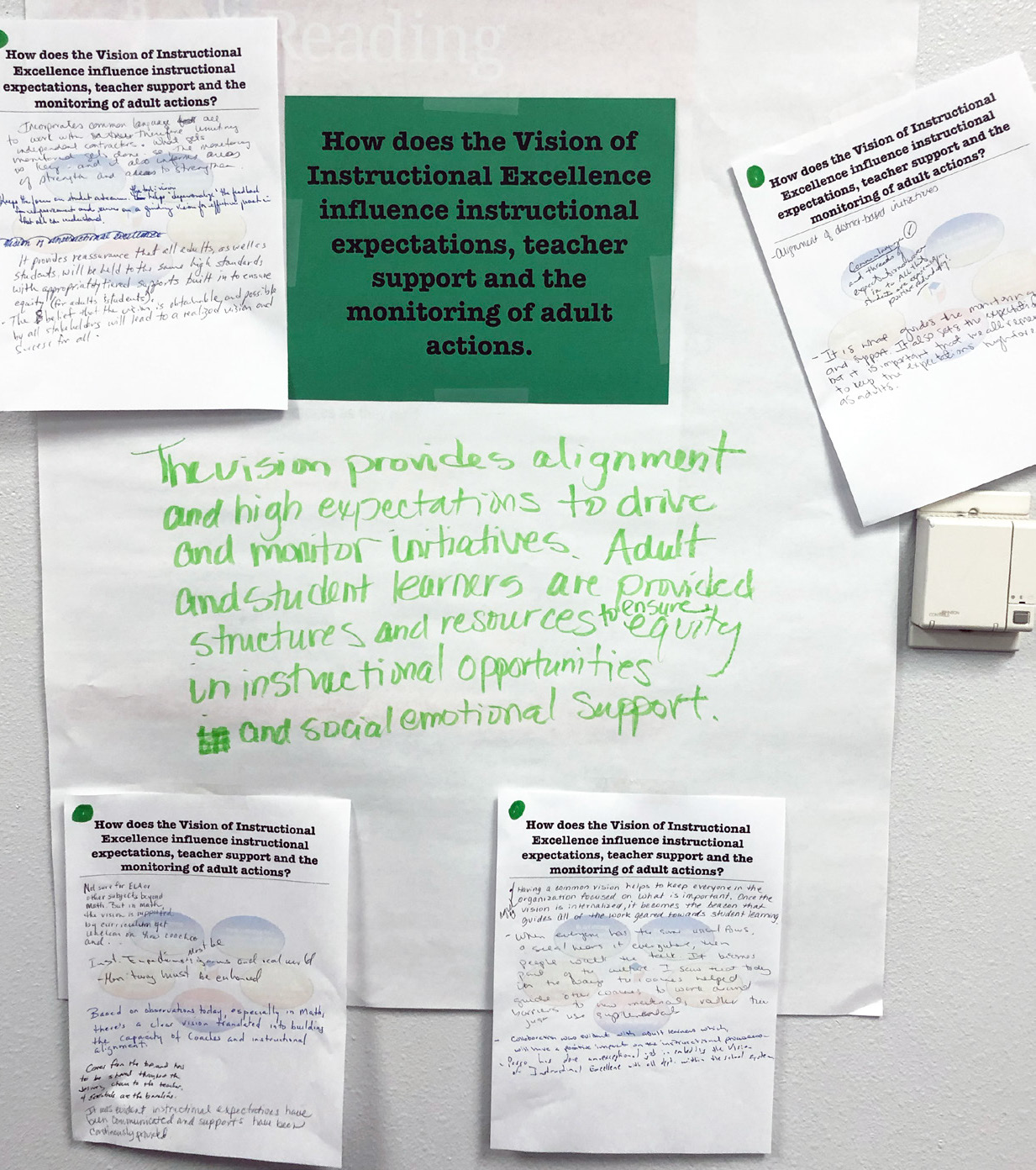
High-Quality Instructional Materials Make a Difference
The district moved to implementation of Eureka Math for grades K-5 at Quail Hollow as that school opened and launched a pilot program with eight of the most at-risk schools the following year. After the pilot year, schools experienced increased math proficiency in grade 3 (73% of schools increased proficiency), grade 4 (100%), and grade 5 (62%). Similarly, a math pilot was launched in grades 6-8 in the 2018-2019 school year with a curriculum guided by a problem-based approach through Open Up Resources. For the 2019-2020 school year, grades K-5 are in their 3rd year of full Eureka implementation and grades 6-8 are in the first full year of Open Up implementation.
Although the district saw some immediate progress with the Eureka Math implementation, the district accreditation assessment conducted by AdvancED simultaneously as the Eureka Math pilot was beginning in the fall of 2016, confirmed what the district already knew: they lacked a common vision of instruction. Superintendent Browning reflected on those early years of implementation, “we wanted to effectuate a change so deep that it required everyone to sing from the same page, not just the same book. We knew that was going to take some time.”
The district used this as an opportunity to further refine their strategies, protocols, and documents, such as the Key Priorities Guide, to provide more precise guidance to practitioners. It was not enough to see the new plan on posters and in presentations. The vision had to be lived out in classrooms, and that depth of adoption would require a different approach. They leaned on “purposeful redundancy” by communicating the shared vision at every meeting, professional development session, and in every resource. PCS aimed to embed their vision into how schools operated through a few strategic initiatives. The district:
- Began collecting evidence-based artifacts instead of self-reported reflections of progress.
- Honed their professional learning for teachers, leaders, and coaches, ensuring it focused on how one or more World-Class Learning Moments (Fig. 2).
- Assigned school-based coaches to all at-risk, low-performing schools.
- Started providing ongoing coaching and support for multiple content areas consistently throughout the year.
The district continued to refine their comprehensive annual needs assessment by making the vision the focus of the process and the key priorities the drivers of the reflection and planning. Through this process, Pasco leadership began to realize their early efforts focused on increasing Rigorous Instruction were not impacting all the components of the Common Vision for Instructional Excellence.
Attending to Access, Equity and Student Social-emotional Well-being
The district’s commitment to bringing the vision to life for every student and every classroom pushed them to probe further. The reality remained that more than 23 schools within the district had a school grade of D or below. Concerns were raised by teachers about instructional time lost due to classroom disruptions and the lack of resources to address student’s social emotional needs. Additionally, the district uncovered that out of more than 3,000 English Language Learner students, only two students were identified as gifted. These concerns drove the district to clarify that while it remains committed to Rigorous Instruction, two critical levers needed to be addressed — Building Compassionate Schools and Equitable Instructional Practices (Fig. 2).
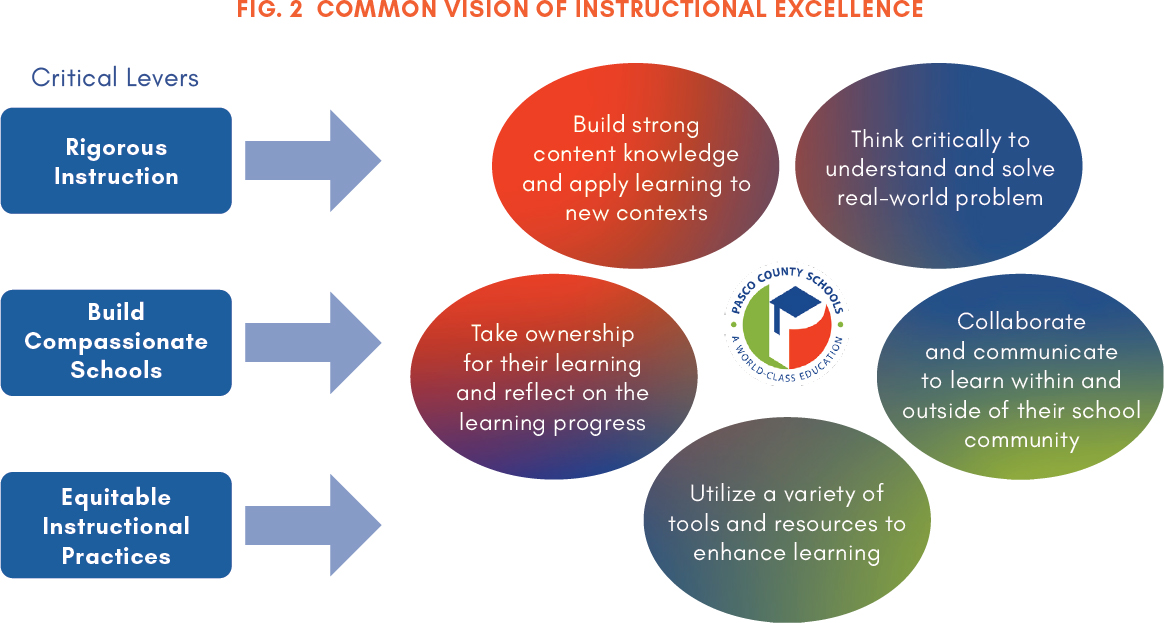
Building Compassionate Schools
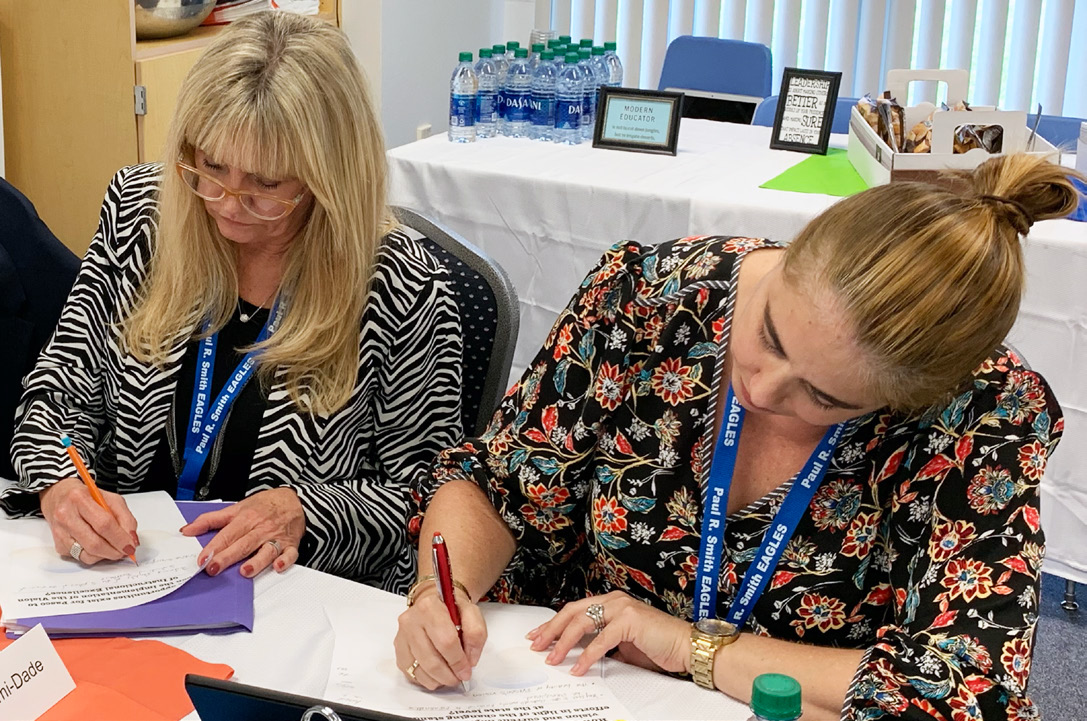
Pasco County Schools’ Commitment to Social Emotional Learning (SEL) reads: In Pasco County Schools, we educate the whole child. Our students learn to think critically and solve complex problems while also becoming compassionate human beings. We ensure that all students have the skills they need to become responsible and contributing members of our community.
Recognizing that Building Compassionate Schools requires a balance of rigor and support to both students and teachers, PCS developed a plan for equipping teachers and school leaders to integrate social emotional learning standards into school communities. To drive this work, the district partnered with principals and teachers to develop SEL standards and Positive Behavior Systems in every school based on the Collaborative for Academic, Social, and Emotional Learning (CASEL) framework. In the fall of 2019, district leadership initially focused on introducing the SEL competencies for adult understanding and later promoting signature SEL training to elevate the SEL standards created by the district. SEL training is also now being conducted through district-wide early release days — a first for the district.
Equitable Instructional Practices
The third lever supporting the PCS’ Vision of Instructional Excellence is Equitable Instructional Practices. Even with the district making sweeping changes with Rigorous Instruction and Building Compassionate Schools, the district identified an important distinction between equality and equity. To that end, district leadership developed a comprehensive equity strategy to better understand the needs of students and provide more opportunities for them to succeed based on those needs. Starting in school year 2017-18, the district launched a combination of initiatives:
- Elementary School: Gifted Screener
- Middle School: Acceleration and Enrichment Tasks
- High School: Equal Opportunity Schools Partnership
Elementary School: Gifted Screener
The district piloted an elementary gifted screener in 2017-18 with 35 schools, then expanded to all schools in the following year. The screener evaluates giftedness in second grade students through an aptitude and an achievement assessment. Students are identified for this program by demonstrating high-performance ability or potential in academic areas.
Over the last two years of using the screener, a total of 245 second grade students have been found eligible through the screener, with an average of 72% of those students from underrepresented groups.
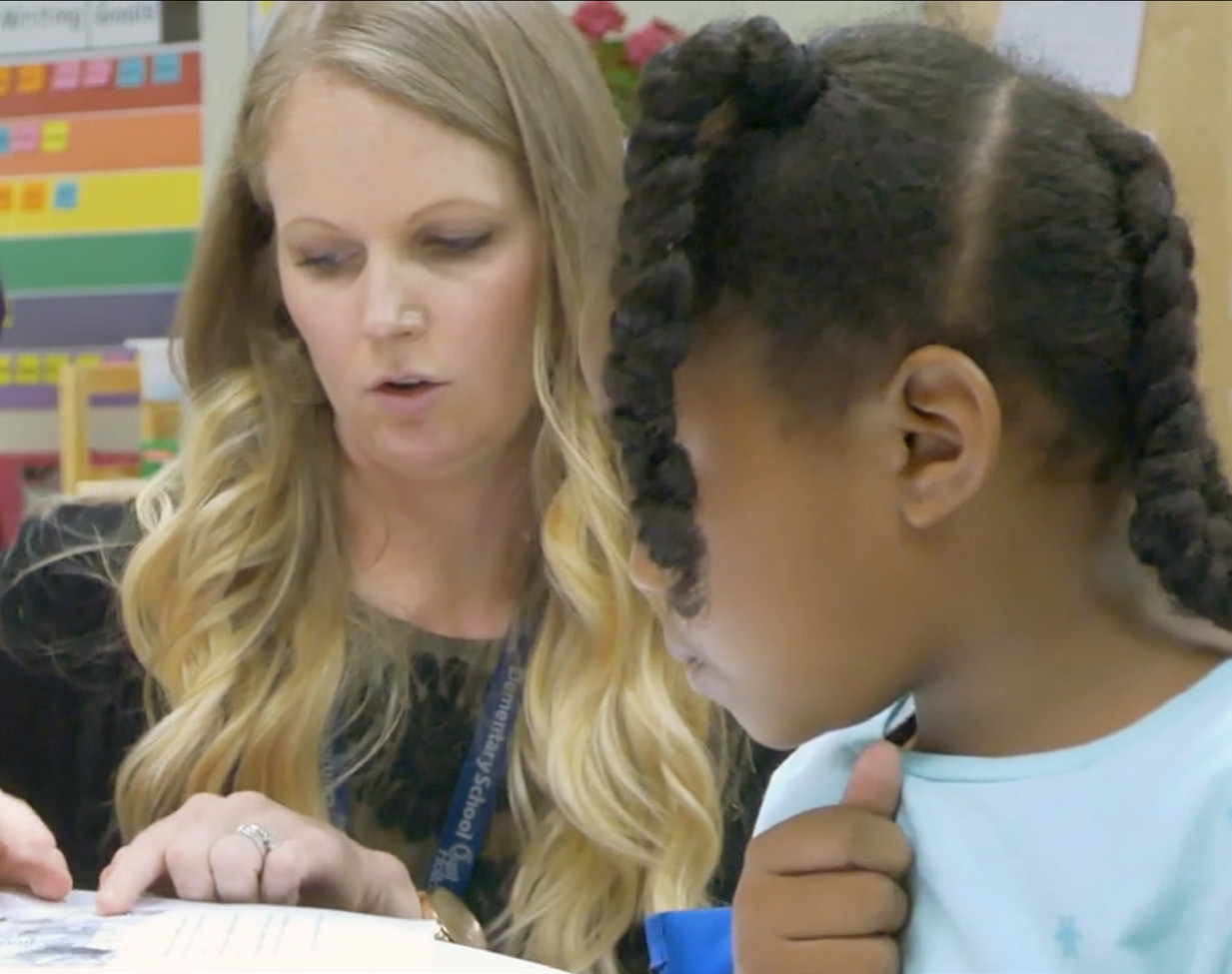
Middle School: Acceleration and Enrichment Tasks
The district also focused on providing opportunities for elementary and middle school acceleration. They started by developing an Elementary Math Acceleration Worksheet to standardize the criteria for acceleration across the district. Teachers and Gifted Resource Teachers also worked collaboratively to develop enrichment tasks in K-5 to provide extended learning opportunities for students in those grades. All fifth grade students also had the opportunity to be considered for sixth grade math through additional testing, rather than solely teacher selection. PCS also reduced gatekeeping in other content areas, increasing the number of students accessing these courses.
Additionally, the district focused on equipping teachers with the skills to provide better differentiation within the standards to meet the needs of diverse learners instead of lowering expectations. This work directly addressed the findings of The Opportunity Myth and the districts’ work with TNTP.
High School: Equal Opportunity Schools Partnership
Pasco County Schools also began to identify ways to bring more rigorous course options to traditionally underrepresented students at the high school level. Through its partnership with Equal Opportunity Schools and the implementation of school-based Equity Teams at every school, the district is again taking action to remove “gatekeepers” by conducting annual audits in all high schools to assess student access to advanced courses.
Since the partnership began in school year 2017-18, over 730 students have been added to Advanced Placement (AP) and Advanced International Certificate of Education (AICE) courses, the number of AP Exams taken has increased by over 600, and the percentage of AP exams passed increased by 3%.
Pasco County Schools will continue striving to scale this work with fidelity across the district and into the local community to businesses, parents, and other community members. They also intend to engage students in this work, encouraging them to take more ownership of their own education and provide an added layer of accountability for implementation down to the classroom level.
Looking Ahead
Today, four years into their implementation, Pasco County Schools remains committed to the Common Vision of Instructional Excellence and the three levers that support it: Rigorous Instruction, Building Compassionate Schools, and Equitable Instructional Practices.
In fact, the district attributes its recent gains in student achievement to an unwavering commitment to developing, executing, and measuring the impact of its priorities aligned to its Common Vision for Instructional Excellence.
Looking ahead, Pasco County Schools will continue striving to scale this work with fidelity across the district and into the local community to businesses, parents, and other community members. They also intend to engage students in this work, encouraging them to take more ownership of their own education and provide an added layer of accountability for implementation down to the classroom level.
A Vision Tested: The Pasco Perspective on a Shared Vision During a Global Pandemic
While no one could have foreseen the implications COVID-19 would have on the world in SY 2019-20, Florida is no stranger to emergency management and disaster planning. However, the onset of coronavirus and its impact on Florida’s education system came with no playbook; yet some Florida districts — including Pasco — were able to stand up Instructional Continuity Plans (ICPs) very rapidly. These plans were complete with strategies for student and family communications, device and hotspot distribution, and supports ranging from the academic to social emotional supports and food security.
Pasco Superintendent Kurt Browning — who himself battled the coronavirus in June of 2020--believes that Pasco’s intentional focus on grounding all of Pasco’s beliefs and actions in a shared vision before the pandemic, was what enabled them to so quickly realize an Instructional Continuity Plan.
“Having such a clear sense of our priorities as a district, embodied in our Common Vision of Instructional Excellence, gave us an instant checklist of what we needed to build into a distanced learning plan outside the typical brick-and-mortar structure,” Browning said.
“Dealing with COVID showed us, more than ever, the value of our Common Vision and how it has evolved. As important as our relentless focus on the rigor of instruction, we really saw that where social-emotional supports and access to instruction were maintained, student engagement and learning remained high. I believe those successes, all based in our ongoing work as a district to improve access and equity, really proved vital to our successes this spring.”
In reviewing their attendance and engagement data from spring 2020, the PCS team zeroed in on schools who were able to keep students engaged and succeeding, while simultaneously working to help schools re-engage the students who were not. While there were a number of factors PCS leaders observed, they were struck anew by the power of relationships.
Pasco County CAO Vanessa Hilton noted, “We saw that where principals and teachers were engaging with students and families more — checking in, following up, offering help in specific ways — there was significant correlation to levels of student engagement and outcomes. In that way, the pandemic has shown us the absolute value of the relationships our principals and teachers cultivate with students and families. That is what brings great instruction to life, and creates the opportunities for our students to have the World-Class Learning Moments we treasure, regardless of where students are doing their learning.”
As it enters SY 20-21, PCS leadership is turning their learnings from COVID-19 into new ways of work and support for school leaders. Pasco is one of the four districts now working with Impact Florida in a COVID Recovery Cadre that is focusing on student-level interventions and social-emotional supports.
"I believe in the power of the Five Conditions, especially the power of how all five conditions work together. While we had really focused on a lot of elements within our vision, and incorporated instructional materials and professional learning into that, this spring really showed us that using our data and having school leaders who know how to bring our vision to life with specific behaviors that cultivate social-emotional connection is absolutely vital. We are eager and hungry to take our work to the next level as a result.”
- Pasco Superintendent, Kurt Browning
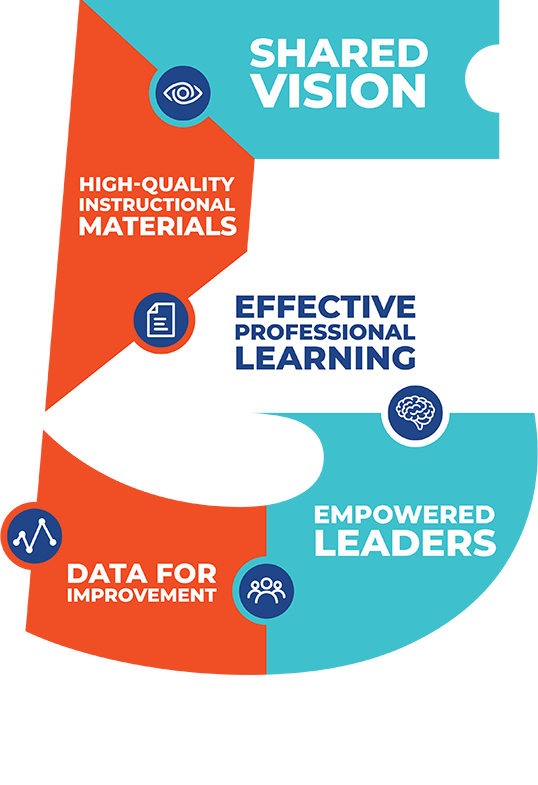
Reflection Questions
- What evidence of the Five Conditions That Support Great Teaching do you see in this case for impact?
- Does your school or district have a shared vision of what great teaching looks like?
- How does your school or district ensure that vision is realized for every student in every school?
- If none exist, what aspects of this case for impact could you use as a guide to get started?
- If you were to develop and implement a shared vision in your school or district, what potential roadblocks would you be likely to encounter? How might you navigate these?
- How has your shared vision provided reflection points for you during the pandemic? If you do not have one, what has grappling with coronavirus showed you about critical elements for a shared vision?
